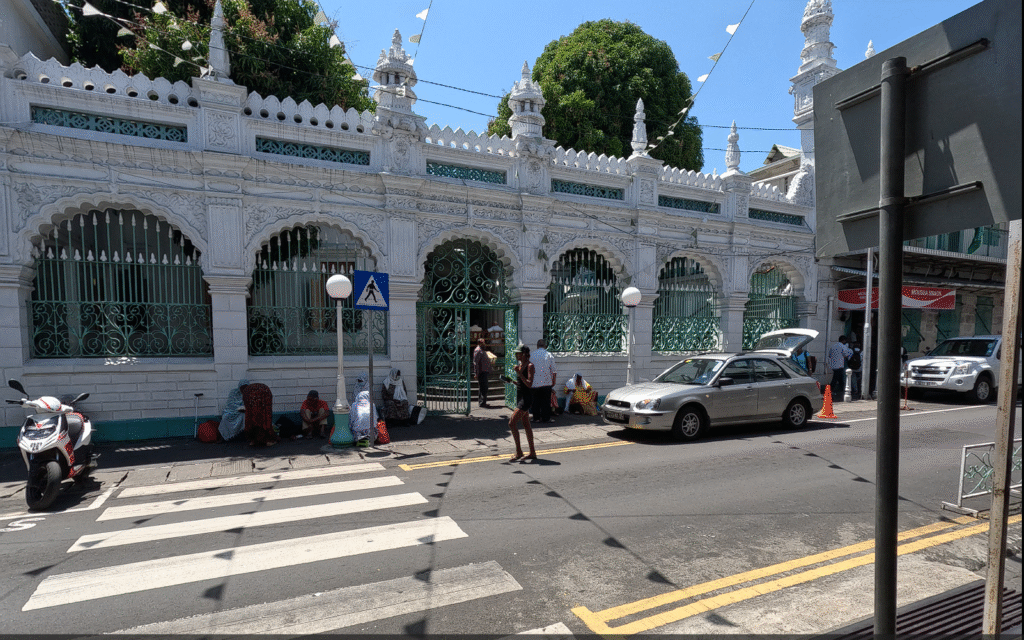Walking through the bustling heart of Port Louis, just beyond the noise of the Central Market and the rhythm of everyday life, lies a place where stillness lives beneath an old Indian-almond tree. The Jummah Masjid, framed by graceful arches and sea-green balconies, feels like an unexpected breath of calm in the city. A place where worship, history, and architecture meet, not with grandeur, but with warmth.
Built in the 1850s by Muslim merchants from Gujarat, Jummah Masjid is more than a mosque. It is a living chapter in the island’s history, written in white marble, carved teak, and whispered prayers. Its roots go deep, both into the ground of Queen Street and into the lives of generations who have passed beneath its arched colonnades. The almond tree in the courtyard, already mature when the land was first bought, has watched over weddings, Ramadan nights, and quiet afternoon meditations for over 170 years.
What makes Jummah Masjid truly remarkable isn’t just its beauty, though it’s stunning. The façade feels like a mosaic of cultures. Moorish detailing sits alongside Creole verandas. There are domes from India, stained-glass fanlights from the colonial era, and carved wooden doors that invite both reverence and curiosity. It’s a mix that tells the story of Mauritius itself, where migration, trade, and faith are always interwoven.
Inside, the former Mosquée des Arabes still stands at the spiritual heart of the complex. This small prayer hall, once the entire mosque, is now home to delicate chandeliers and the peaceful tomb of the Sufi saint Jamal Shah. Even today, many Mauritians, regardless of religion, stop by to light incense, offer a prayer, or simply enjoy the quiet. The mosque continues to be a place for community, learning, and generosity. Children attend Qurʼan classes here, the halal council supports shops and families across the island, and during Ramadan the marble courtyard glows with the sound of night prayers.
Visiting Jummah Masjid is easy and warmly encouraged. It’s free to enter, with volunteers offering guided explanations about Islamic traditions, the mosque’s story, and the rituals of prayer. Out of respect, visitors should cover their shoulders and knees, but scarves are offered at the entrance if needed. Cameras are welcome in the courtyard, though you’ll need permission for interior photos. The best times to visit are weekday mornings, especially if you want to avoid the crowds and catch the golden light through the stained glass.
Just outside the mosque, the scent of biryani and street-side fruit lingers in the air. You’re a stone’s throw from Central Market, where you can buy pineapple with chilli salt or pick up some handmade souvenirs. Walk a few more minutes and you’ll reach Aapravasi Ghat, a UNESCO site that explains the journey of indentured labourers, many of whom once prayed right here. Keep going and Chinatown, the Caudan Waterfront, and Port Louis’ patchwork of cultures opens up in every direction.
Jummah Masjid is not just a building, it’s an experience. You feel it in the hush of the prayer hall, the shadow of the old almond tree, and the way every visitor, from curious traveller to lifelong worshipper, is welcomed the same. Whether you are drawn by faith, architecture, or a desire to understand the city’s soul, this mosque offers something that lingers long after you leave.



